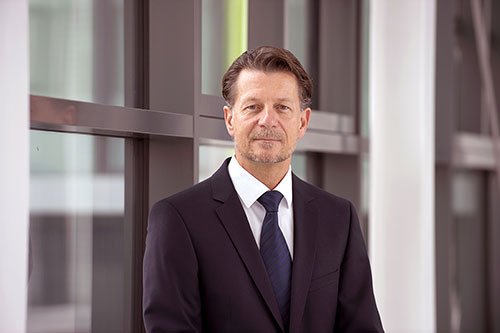Dr. Wolperdinger, how would you classify “bioeconomy” as a field of research?
The bioeconomy has gone global: for some years now, many countries have made a real effort to develop and implement bioeconomy strategies. Definitions of bioeconomy differ depending on the context and can be found, for example, on the EU websites. Generally speaking, the bioeconomy derives from the efforts of mankind to learn from biology and nature and apply this knowledge to product manufacturing and process optimization. The primary questions are now: How should a circular economy be structured so that it does not produce any waste? How should fossil fuels be replaced? In what ways can sustainable processes be used to generate innovative products and healthier foods? The bioeconomy is therefore like an engine for implementing global sustainability goals.
How does Fraunhofer-Gesellschaft – and Fraunhofer IGB as part of it – advance the bioeconomy?
The bioeconomy has become progressively more important at Fraunhofer-Gesellschaft, just as external visibility and perception of Fraunhofer-Gesellschaft have increased significantly. Fraunhofer IGB is highly diversified in the bioeconomy, having been involved with it for 40 years. We’re therefore active in many different fields of the bioeconomy. We’re currently working in the areas of health, sustainable chemicals and the environment, all of which are interconnected, of course.
What specific projects are you working on?
Water scarcity is a key issue in many countries, which is why we’re working, for example, with Stellenbosch University in South Africa to develop solutions. Alongside “water topics,” we’re also focusing on energy and social issues. In addition, we’ve introduced an innovative platform that allows us to examine these questions, in particular, with many local partners as well as promote these issues in other regions around the world.
On a national level, we work with bioeconomic solutions associated with the phaseout of coal and the structural change. We’ve therefore developed the concept of a “BioEconomyHUB” at our branch in Leuna, which we’re promoting bioeconomically with many partners and companies at the Leuna chemical complex. We’re also implementing the developed processes in the sector. In other words, we want to strengthen the power of innovation in the regions affected and thus safeguard their futures.
Another example from inside our company is dyes extracted from atmospheric CO2. Rather than extracting dyes from crude oil using a variety of unsustainable processes, as is usually done, we’re transforming the source of carbon in the Celbicon project: we extract the necessary carbon from the air in the form of CO2 and, using a combination of electrochemical and biotechnological processes, convert the CO2 into a complex, value-creating dye. Working with partners, we also develop biodegradable plastic alternatives such as packaging materials for cosmetics. You could even say that the plastics are created with the strength of bacteria. We’ve already come a long way with the process changes this requires.
Just how application-oriented is the bioeconomy? In other words, how long would it take for associated products to reach the market?
Bioeconomy processes have often had to compete with established processes, which represents a major challenge. While established processes are cost-optimized, new products are tested very carefully and have to overcome major, often regulatory hurdles before launch.
One example of the potential of the bioeconomy is functional substances extracted from microalgae that can replace the copper-based sprays used in viticulture. The industry has responded with a great deal of interest, and initial discussions on its use are already underway.
At Fraunhofer CBP in Leuna, we’ve already produced market-ready products and intermediate products on an industrial scale, including bio-based isobutene as a chemical raw material for Global Bioenergies GmbH and biotechnologically produced organic acids for a variety of companies, for example, as a building block for plastics.
